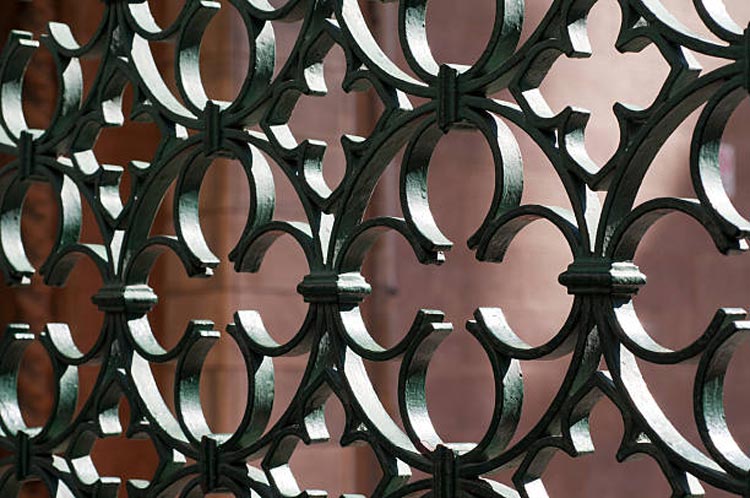Wrought Iron have been widely used for decades in architecture. Finding structures constructed from wrought iron isn’t something new; in fact, every homeowner has come across the term “wrought iron” when discussing their options for indoor staircases and gates with contractors.
However, there is a misunderstanding or little to no information in regards to what is wrought iron, where and how it’s used. Many don’t understand how it differs from other metals used in architecture.
Let’s discuss the material itself, how it’s fashioned into railings and gates, and the various benefits it offers.
What is Wrought Iron?
It’s an iron alloy that comprises a low carbon content, around 0.08 percent. Because it’s semi-fused with fibrous slag inclusions, it has a unique ‘grain’ which gives it an appearance similar to wood. This is only visible when the wrought iron is bent.
Wrought iron is resistant to corrosion, ductile, malleable, and tough. Additionally, it’s easy to weld, making it a versatile construction material. Wrought iron was used in construction well before modern methods of steelmaking were developed to allow large amounts of steel. At the time, wrought iron was used extensively in architecture because of its malleability.
It’s called wrought iron because of how ironworkers would roll and hammer it while it was hot enough to discharge molten slag.
How is wrought iron incorporated into Staircases?
Wrought iron is different from cast iron, mostly in terms of malleability and ductility. It’s used for decorative gates, railings, and staircases because in architecture these features often require more work.
Since cast iron is brittle, hammering it would damage the iron, causing it to break. Instead, cast iron is used to make different shapes with the help of molds. On the other hand, wrought iron can be hammered and worked into complicated twists and designs for a customized and intricate look.
This explains why wrought iron is the most preferred material for vintage architecture and railings.
What are the benefits of wrought iron?
Regardless of its application, residential or commercial structure, wrought iron offers various benefits to a property or home owner.
Customizable
Wrought Iron’s malleability makes it highly customizable. Our vast collection of indoor staircases and railings show that one can fashion numerous custom designs using a single material. Homeowners have the flexibility with sizing and design because of the customizability advantage that comes with wrought iron.
Attractive
Wrought iron can be used to create a variety of attractive patterns for gates, railings, and staircases. It offers a vintage appeal to all these features which can increase your property’s value.
Durable
Wrought iron has extensive durability which means it can last decades with the right care and maintenance. Painting it every ten years or so can prevent it from rusting, but even if it does rust, it will be long before the strength of the material is affected.
Our Product Lines Made from Wrought Iron
At Naddour’s Custom Metalworks, we create a variety of different custom metalworks to add beauty and aesthetic value to your home. Our collections comprise iron gates, spiral indoor staircases, and different forms of staircase railings, such as modern & ornate styles.
We can fabricate a variety of unique designs that accentuate your home or property, and we also make customized metalworks for distinct settings.
Are you ready to start? Contact us for a FREE Consultation…
